Cats are interesting little beings. They will suddenly zoom across the room, they will appear to us as if they are watching things that aren’t really there, and they will lick us—or things—that make us wonder why the heck it is they are doing that. One of the things that cats often like to lick is plastic. We know that many cats cannot resist a good shower curtain, ripping it to shreds happily with their claws. But this is different when it comes to actually wanting to taste this non-edible item. Have you ever wondered why it is that cats like to chew or lick plastic? The answer might surprise you…

First off, think of your cat’s senses
We know that cats have incredible senses. They have the ability to hear better than any domesticated animal, those tiny slits and pockets on their ears turning those adorable triangles on top of their heads into feline satellite dishes. Then those whiskers, deeply embedded underneath the skin’s surface which can detect even the slightest of movements in the air.
Now, dogs do have a better sense of smell than cats do, but this does not mean that cats still do not have an incredible sense of smell. And remember, your cat is an obligate carnivore, meaning that they must eat meat to survive. So, anything that triggers that natural carnivore sense in their brain will cause them to literally want to taste what they’re smelling. (Hint, hint!)
Their little cat mind might trigger for a moment, happily pretending that there’s maybe a scrumptious mouse scurrying around in that plastic bag you’ve just brought home. Let’s find it!
What is in plastic that makes cats want to lick or chew it?
We live in a modern day and age where many companies primarily focus on mass production to accommodate the masses. So, this means that many must go the cheap route when looking to mass produce items which are in high-demand.
Many of us do our part to try and bring reusable grocery bags when we visit grocery stores and supermarkets, but if not, then we must use their thin, plastic grocery bags to carry out our purchases. Cats are often fascinated with the sounds from these bags, but many cat owners will report that their cats will like to lick plastic grocery bags, too. (But then there are those really smart kitties that know you’ve bought them their favorite treats at the store and they’re simply being nosy!)
So, back to the smell and wanting to literally taste what they are smelling. Because of their mass production, grocery store plastic bags often contain tallow. This animal byproduct is used in their production because of its elasticity and that it allows the bags to separate easily during and post-production.
Business Insider shares that,
Many plastics, like commercial shopping bags, contain chemicals often referred to as “slip agents,” which are derived from the stearic acid in animal fat. They essentially prevent the polymers from sticking to metals during manufacturing and clinging to each other afterward.
But, what about those eco-friendly biodegradable bags?
Well, those actually contain cornstarch. And although cats actually not have the ability to taste sweetness, there is something about the cornstarch that is alluring to their cat sense. And, of course, cats want to lick or chew that save-the-earth plastic, too.
What’s been in here?!
Keep in mind, that miniature tiger tabby cat in your living room has a sense of smell that’s approximately 14x what yours is. If there’s even the slightest smell of something that they consider to be edible inside of a plastic bag or wrapper, you better believe that they’re going to want to investigate it for themselves—even if they’re across the room or down the hall.
Cats licking plastic is entirely different than cats actually eating plastic
Pica is a condition in which a person or an animal desires to eat things which are not technically edible. Things such as dirt, rocks, hair, and even plastic, for example. If for any reason you feel like your cat is trying to actually ingest plastic, this is a cause for concern. Schedule a visit with your vet to get down to the bottom of the issue. If cats ingest foreign bodies, this can lead to blockage, tearing, major gastrointestinal upset, and in some cases even death.
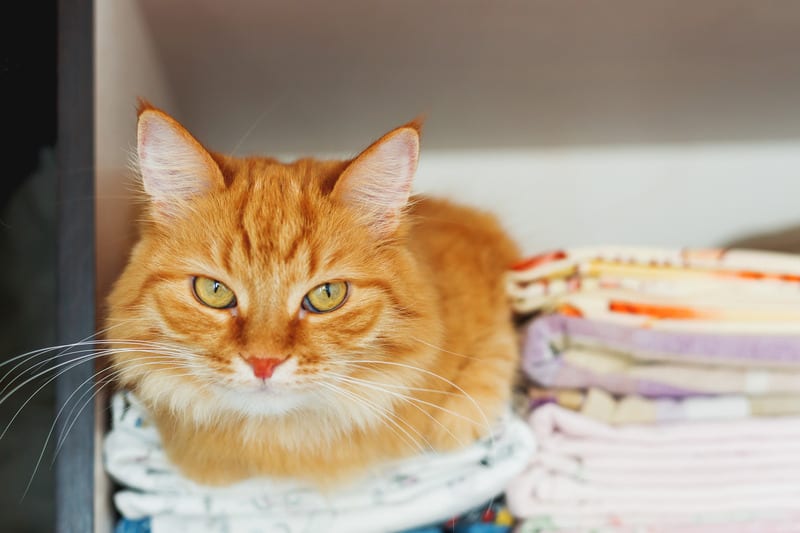
REMEMBER: ADOPT, DON’T SHOP, MICROCHIP YOUR PETS & SPAY AND NEUTER!
Related Story: Science Says This Is The Real Reason Why Cats Eat Grass
Related Story: When This Kittens Breathing Declined, Rescuers Diagnosis Rare Condition and Help Him Conquer It!


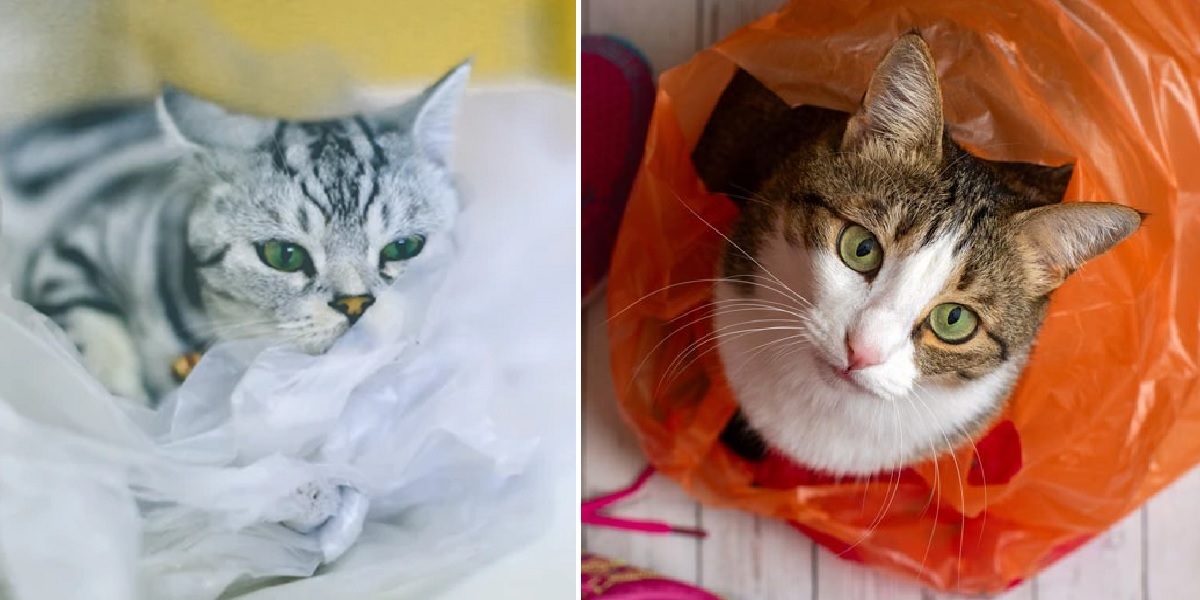
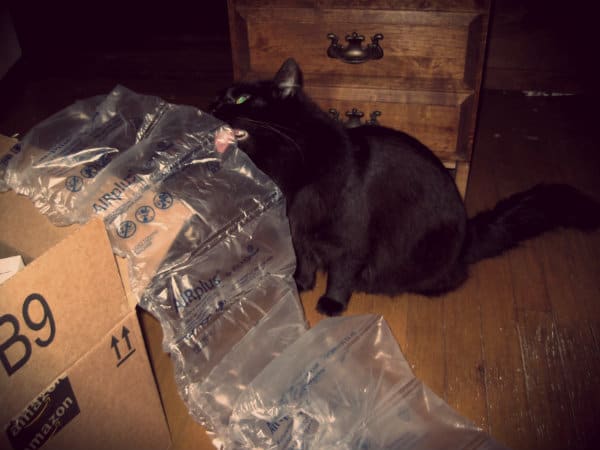
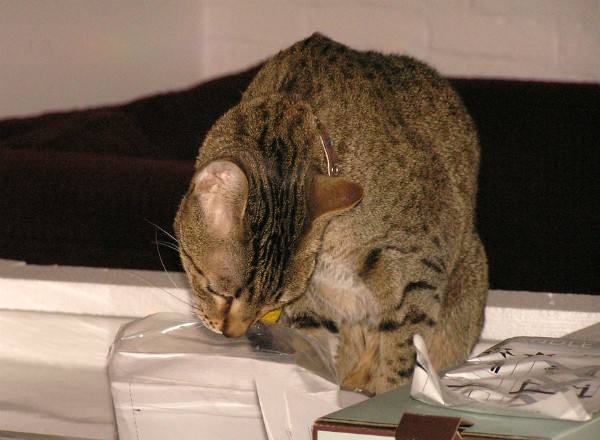
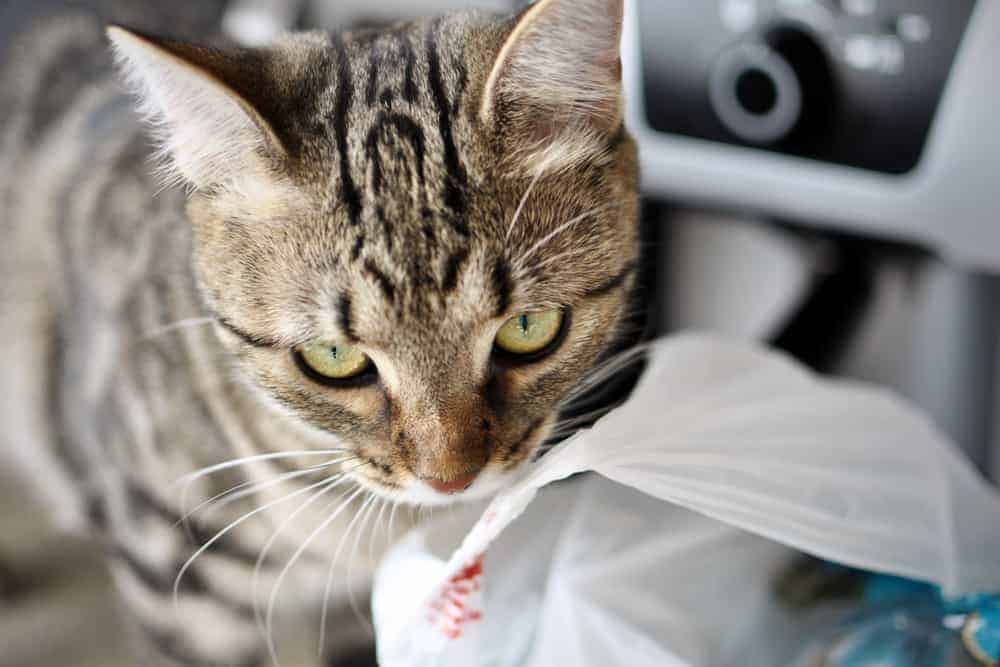

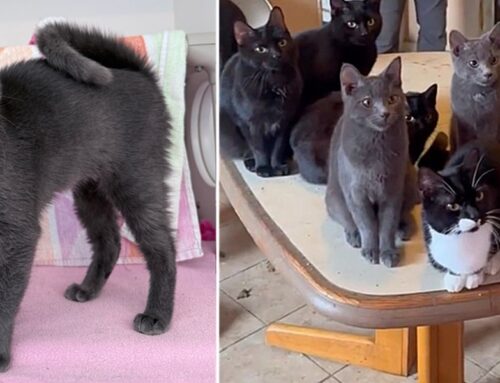
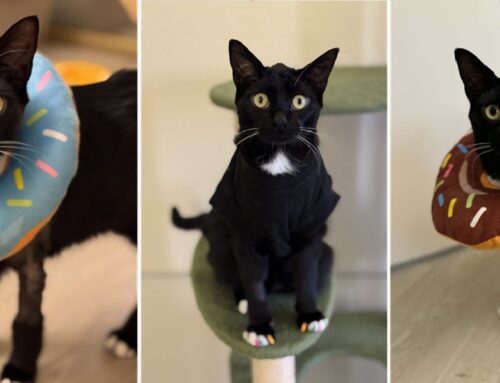
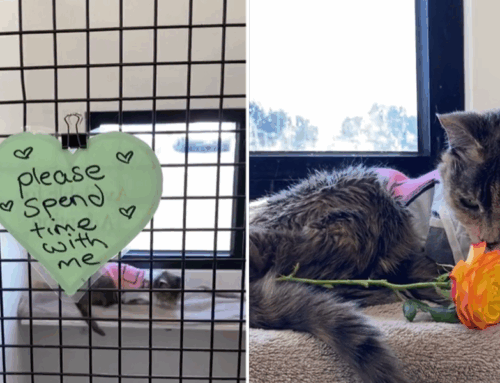
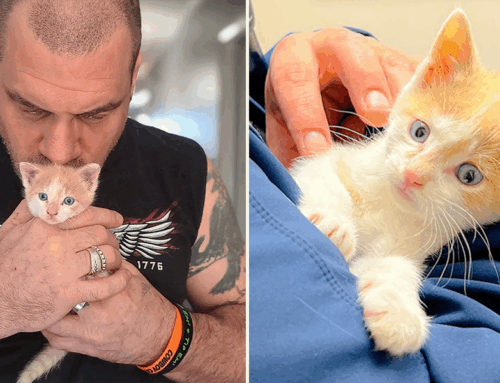
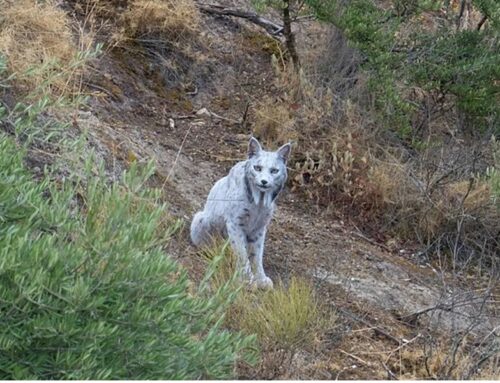
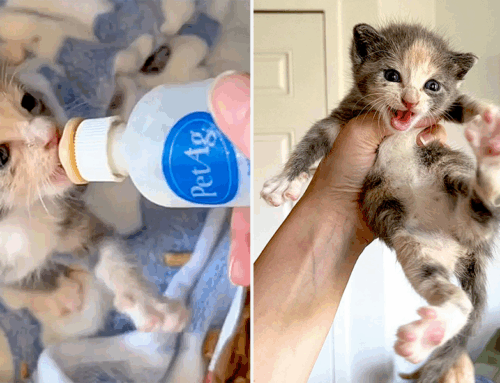
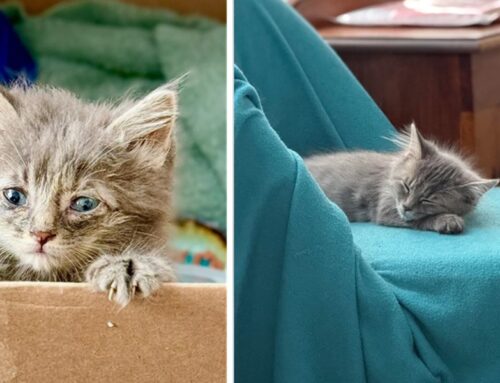
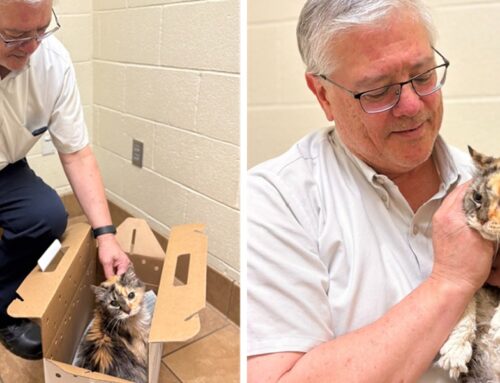
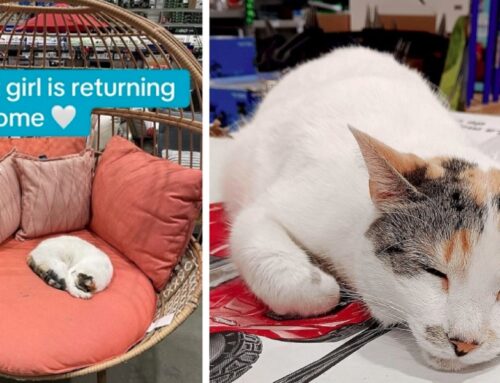
We have a no plastic bag rule around our cats! If we bring home something in a plastic bag, we put in recycle or out of their reach. We don’t want to risk pica or them getting trapped in a bag.
I adopted 14 y.o. litter siblings from a friend when he died. The female was much smaller & was known to chew on bags. She was also stunted cognitively. After moving in with me plastic was limited & she started to gain weight & improved in how she interacted and communicated. I realized how much the plastic must have blocked her ability to absorb nutrients by the way she improved so much in 3 years. She’s much like a kitten even though she’s 17 y.o. She still searches out plastic so I make sure what I give her can’t be ripped & swallowed & this satisfies her. Her brother loved to chew on thicker (chocolate free) candy wrappers, lint roller and packing tape.